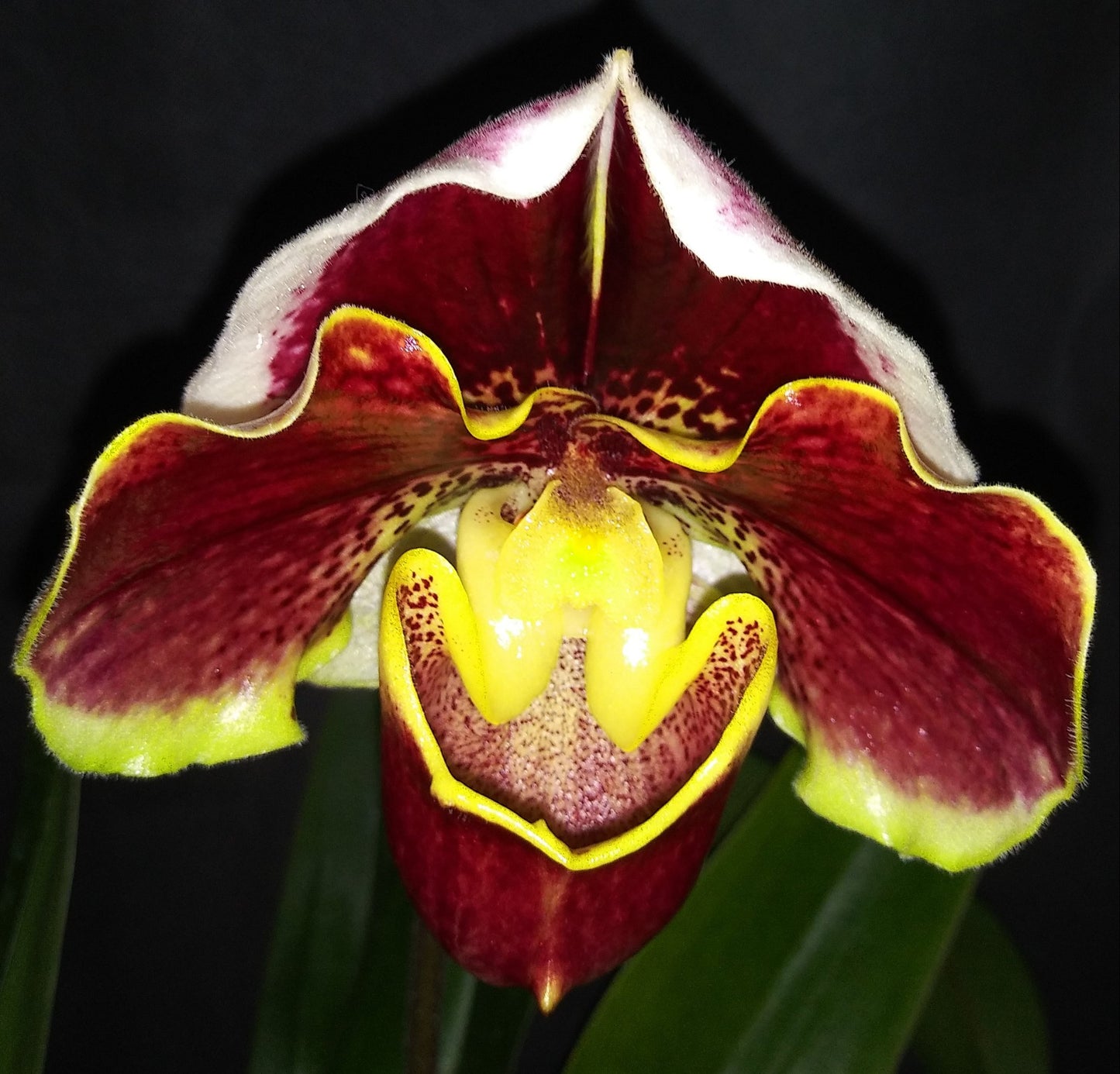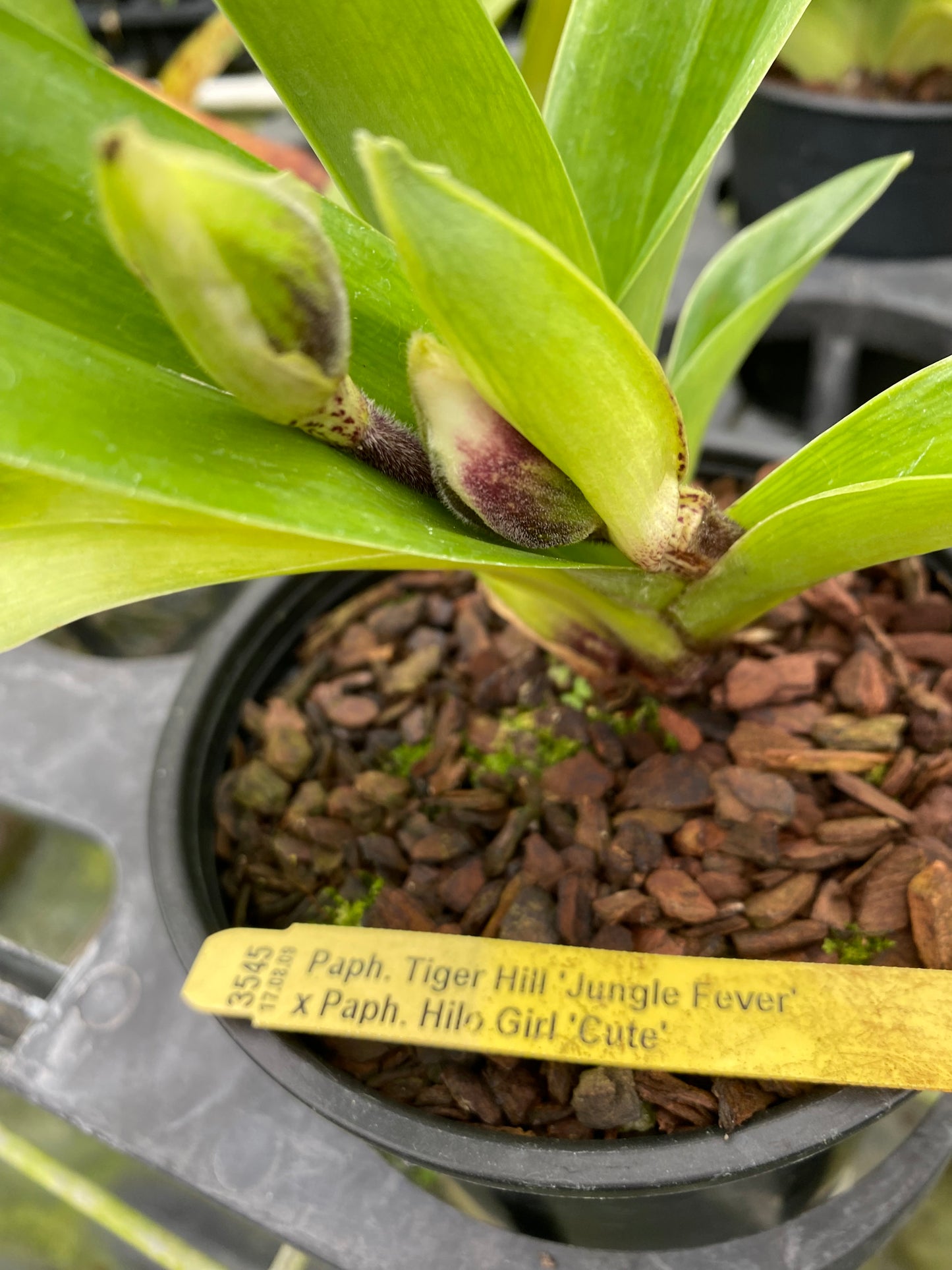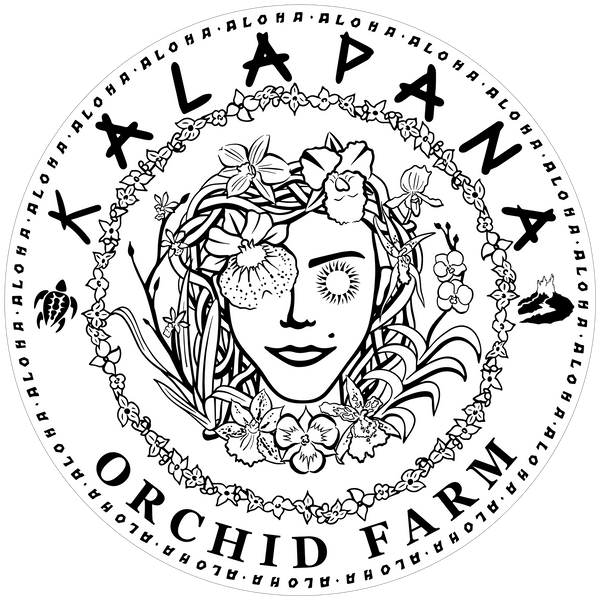Kalapana Orchid Farm
Paph. Tiger Hill 'Jungle Fever' x Pahp. Hilo Girl 'Cute'
Paph. Tiger Hill 'Jungle Fever' x Pahp. Hilo Girl 'Cute'
Couldn't load pickup availability
Here we have a captivating collector's Paphiopedilum hybrid, a cross between Paph. Tiger Hill 'Jungle Fever' and Paph. Hilo Girl 'Cute'. This specific pairing was registered by R. Galaska (Hilo Orch. Farm) and formally named Paph. Ceppelin's Beauty. This nomenclature highlights the deliberate cultivation and unique identity of this orchid. To appreciate the genetic lineage of this intriguing hybrid, let's trace its parentage:
Paph. Tiger Hill, registered in 1997 by Orchids Royale, is a cross of Paph. Tiger Top and Paph. Keyeshill. Paph. Tiger Top itself is derived from a significant proportion of Paph. insigne and Paph. boxallii. Paph. Keyeshill also contributes to this rich genetic background.
Paph. Hilo Girl, registered in 2012 by J. Fang, is a cross of Paph. California Girl and Paph. Taisuco America's Plum. Both Paph. California Girl and Paph. Taisuco America's Plum further introduce genetic contributions from species such as Paph. insigne, Paph. boxallii, and Paph. spicerianum.
We can note that this wonderful hybrid has quite a robust blend of several foundational Paphiopedilum species.
While details on the specific flower characteristics of this exact cross are often discovered as they bloom, we can expect a captivating slipper orchid with influences from its well-known parents. Paphiopedilums, commonly known as "slipper orchids" due to their distinctive pouch-like labellum, are known for their striking patterns and often waxy texture. Given the parentage, one can anticipate a flower that combines the robust, spotted or striped elements of 'Tiger Hill' with the appealing softer and more refined qualities of 'Hilo Girl'. Colors can range from greens and browns to reds and creams, with intricate veining and bold spotting, typical of many complex Paph. hybrids. The flowers often bloom sequentially or are long-lasting, providing an extended period of enjoyment.
The foliage of Paphiopedilums is typically strap-like, varying in length and width, and can be solid green or beautifully mottled with lighter and darker green patterns. These plants usually form compact growths, with leaf spans for a blooming size plant often in the range of 16 to 18 inches. The height of the flower spike will vary but is generally proportionate to the plant's size, presenting the bloom nicely above the foliage.
Care Instructions
Light: Paphiopedilums generally thrive in bright, indirect light. An east-facing window or a location with similar filtered light conditions is often ideal. Direct sunlight can lead to leaf scorching, while insufficient light may hinder blooming.
Water: These orchids require consistent moisture, but the potting medium should never become waterlogged. It is advisable to water when the medium is just about to dry out. Proper drainage is paramount to prevent root rot.
Temperature: Most complex Paphiopedilums are considered intermediate growers. They flourish in daytime temperatures ranging from 60°F to 80°F, with a nocturnal temperature drop of 10-15°F. Brief excursions outside this range are generally tolerated.
Humidity: An ambient humidity level of 50-70% is optimal. In drier environments, employing a humidity tray or a small humidifier can be beneficial.
Potting Medium: A well-draining yet moisture-retentive potting mix is essential. Common components include bark, perlite, and charcoal. Repotting is typically performed every 1 to 2 years, or when the potting medium begins to degrade.
Available in 6" pots in very limited supply; two are currently in spike.
Share






